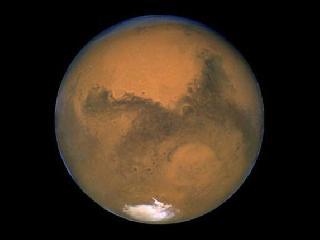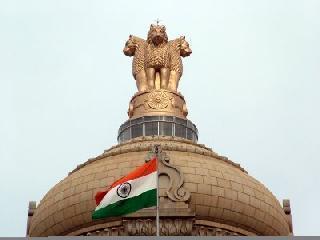
KOLKATA (PTI): India's bid to explore Mars will be a scaled down affair with space agency ISRO flying experimental payload of less than 15 kg as against 25kg planned originally.
The Mars Orbiter Mission, expected to be launched in mid-October this year, will carry five experimental payloads with a total weight of 14.49 kg.
The Methane Sensor for Mars, which will be capable of scanning the entire Martian disc within six minutes, will weigh 3.59 kg, it was revealed at a presentation made by planetary scientists at the 100th Indian Science Congress in Kolkata.
Earlier missions to Mars had detected Methane in the thin Martian atmosphere but the discovery is yet to be corroborated.
Methane is known to be released by some microbes as part of their digestive process.
The Mars mission will propel India to the elite club of five nations comprising the US, Russia, Europe, China and Japan which have launched similar missions.
Another instrument -- Thermal Infrared Spectrometer -- weighing 4 kg will be used to map the surface composition of Mars. The Mars Colour Camera has a mass of 1.4 kg, while the Lyman-alpha photometer, weighing 1.5 kg would measure atomic hydrogen in the Martian atmosphere.
The Mars Exospheric Neutral Composition Analyser (MENCA) which would study the Martian atmosphere weighs about four kg.
All the payloads together weigh 14.49 kg.
The Mars orbiter will go around the planet once in three days, its nearest point being only 371 km from the planet's surface and the farthest point about 80,000 km away.
Prime Minister Manmohan Singh had announced the Mars Orbiter Mission in his Independence Day address in 2012.
Work on the Mars Orbiter Mission is going on full steam and equipment of the five experiments planned during the mission are expected to be delivered to ISRO in March this year.
ISRO's trusted warhorse rocket PSLV-XL is expected to launch the mission sometime in October, 2013 from the spaceport Sriharikota which will first keep orbiting the Earth, achieving the necessary velocity to escape the Earth's gravitational pull.
As per existing plans, the satellite is expected exit Earth's orbit on November 26 and embark on the journey to Mars which is expected to last for around 300 days.
The scientists have drawn up plans to insert the satellite in an orbit around Mars on September 22, 2014.
A key challenge before the scientists is navigating the spacecraft from Earth to Mars in deep space using the Deep Space Network at Baylalu on the outskirts of Bangalore.
Another challenge would be to re-activate the temporary inactive sub-systems of the spacecraft once it reaches Mars after a 10-month journey through deep space.
The liquid rocket engine, capable of generating a 440 Newton thrust, would be required to steer the spacecraft into the Martian orbit.
The spacecraft, with a 1350 kg liftoff mass, will have a single solar array with three panels of 1400 x 1800 mm capable of generating 750 watts of power in the Martian orbit.
It will also be equipped with a 36 AH Lithium-ion battery for power storage.
 Previous Article
Previous Article Next Article
Next Article













The Indian Air Force, in its flight trials evaluation report submitted before the Defence Ministry l..
view articleAn insight into the Medium Multi-Role Combat Aircraft competition...
view articleSky enthusiasts can now spot the International Space Station (ISS) commanded by Indian-American astr..
view article